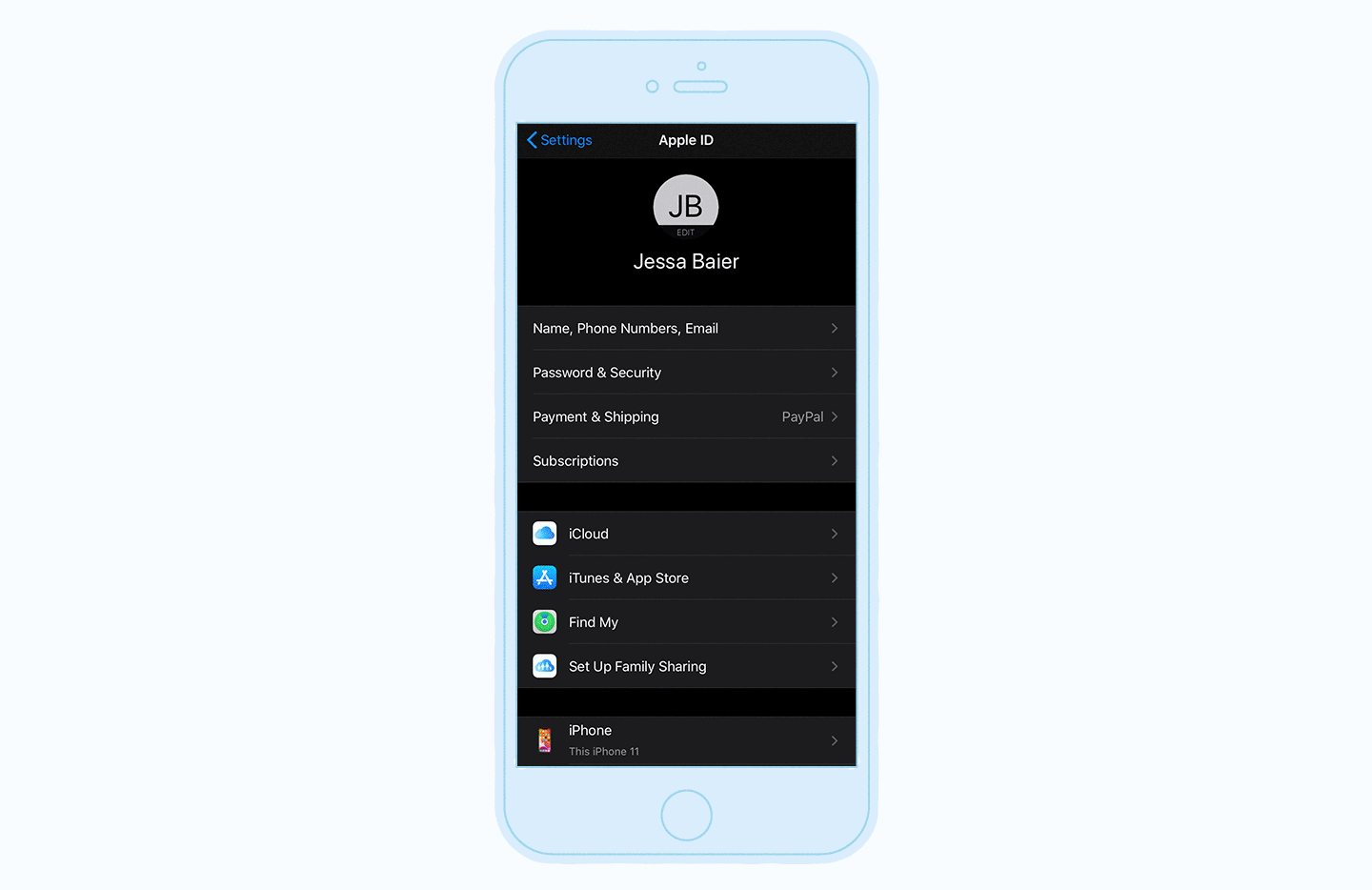The modern age of technology provides so many conveniences and there are all kinds of different devices and tools that make our lives easier.
Apple App Store: Avoid iPhone Malware & Viruses from Apps. One of the easiest ways to keep viruses and other malware off of your iPhone is to only purchase and download apps from the Apple App Store, which you're limited to anyway if you haven't jailbroken your device. Apple's App Store has historically been a secure platform for purchasing. Jan 16, 2017 BitDefender Virus Scanner for Mac – this tool is also free. However, it is just a scanner and won't automatically delete the virus for you. It can, however, point out the file on where you ought to delete the virus. AdwareMedic – this tool both scans and deletes adware files. It's a quick scanner and advisable if you're seeing way too many.
Computers are one of these current day necessities that we all use in many areas of life. I’m sure you or someone you know has experienced the problem of a computer becoming infected by a virus.
Some of these viruses are small and barely noticeable while others can shut down your machine.
Your MacBook Pro is engineered against many different types of common computer viruses but that does not mean that it is immune to the issue.
A MacBook Pro is not likely to become infected by a virus very often but if it does, you need to know how to get rid of it quickly and effectively.
Here’s a look at some of the methods to keep your computer safe and secure while protecting it against unwanted viruses.
Contents
- How to Remove a Virus on MacBook Pro
Does My MacBook Have a Virus?
There is a common misconception that Apple computers will not get a virus.
While it’s true that Apple computers like your MacBook Pro are less susceptible to viruses, that doesn’t mean that they won’t ever get one. In fact, according to a recent report by Apple Insider, malware viruses specific to Macs, in particular, have grown 60% in 2019.
So really, it seems as though viruses on your MacBook might become more of an issue as time goes on.
Although not all viruses are easy to detect, there are some tell-tale signs that your computer may be infected. Some types of viruses may not cause much of a problem on your computer and you might not even now that they are present but others can have a big effect on the overall performance and operation of your computer.
We will look into the steps to get rid of the virus below. If you are experiencing any of these symptoms, you could have a virus:
- You see random advertisements on your computer.
- Your computer starts to act weird, i.e. erratic behavior, unexpected program closures, glitches, black screen etc.
- You notice apps or software present on the hard drive that you did not install.
- Your computer starts to operate really slowly for no apparent reason.
- An app randomly asks for your password.
How to Remove a Virus on MacBook Pro
If you think you might have a virus on your computer, don’t worry.
It can be unexpected and alarming but there is usually a way to get rid of it safely and quickly. It’s good to know the signs and symptoms of a virus so you can remove it as soon as possible once on your computer. There are different ways to remove a virus and here is a look at several of them.
Uninstall Suspect Apps

If you just downloaded an app and your computer started to act as if it had a virus, the problem could lie within that app.
You might have even downloaded an app that claims to help remove viruses only to find out that it is the source of a virus! This seems shady but it happens all of the time. Also if an app or program has appeared on your computer without you downloading it, that could be your problem. Either way, you need to uninstall the suspect apps.
- Open your Finder.
- Click on Applications.
- Drag the suspect app to the trash or Control Click and select Move to Trash.
- Go to the Library folder in your Finder.
- Open both the Launch Agents and Launch Daemons folders.
- Check for any files associated with the suspect app in these folders and send to trash.
- Empty your trash.
Delete Browser extensions
Many different types of malware viruses exist in the form of extensions off of your internet browser. If you have one of these viruses, you need to delete these browser extensions to get rid of the virus. Here is how to remove these extensions from the most common browsers.
In Safari:
- Open Safari.
- Click Safari from the menu on the top of the computer screen.
- Look at the list of installed extensions and delete any that you did not install or seem suspicious.
In Firefox:
- Open Firefox.
- Click the 3 line icon in the top-right corner of the browser.
- Click Add-ons.
- Choose Extensions.
- Find any extensions that look suspicious and delete them.
In Chrome:
- Open Chrome.
- Click on the 3 dot icon in the top-right of the browser.
- Select More Tools.
- Choose Extensions.
- Look over the extensions list and click Remove for any that seem suspect.

Use A Virus Removal Program
There are a few good virus removal tools designed specifically for Macs that can help you get rid of any unwanted viruses easily.
Most of these programs cost a little bit of money upfront but the service they provide is well worth it for the peace of mind to easily remove any virus or other issues your computer might come down with. All of these programs are easy to operate and will walk you through the process of virus removal.
Some good virus removal software for your MacBook Pro:
Final Thoughts
Computer viruses are simply part of having a computer.
There is a really good chance that you will experience an issue with some sort of virus over the course of owning your MacBook Pro. Even though these computers aren’t as susceptible to viruses as other laptops and PCs, it still happens so you need to know what to do in case it does.

A computer virus doesn’t mean that the computer is going to stop working, you just need to get rid of it following any of the steps above to ensure that your machine works as it should. If you still have issues after following the above steps, purchasing antivirus software may be the best option.
Have you ever had a computer virus? How did you get rid of it?
One of the reasons behind Apple's pride is that they keep their operating system - Mac - practically virus-free. If you’re an Apple user, you already know that it's quite difficult to transfer data from your gadget to a non-Apple gadget: This is one of the ways Apple keeps Mac secured from malicious software or viruses.

Mac has stayed quite popular over time, and while it's not immune to malware, chances are viruses are not as rampant as you think. However, if you doubt whether your Mac is infected, here are some tips on how to know if you have a virus on Mac.
Your Device is Slow for Uncertain Reasons
How To Check For Virus On Mac
It's normal for your Mac notebook to be slow if you have a number of programs running at the same time. However, if you notice that there are barely any - or absolutely none at all - programs open and your laptop is still running unusually slow, it may be time to be wary.
You can still search for tips on how to speed up your device, but if none of those tips work, it could indeed be that you have a virus in your Mac.
Unexpected Ads Pop Up Everywhere
If you've installed something you probably shouldn’t have, chances are you are seeing unusual ads in places where you haven't seen them before, even when you’re not browsing through the internet. Adware has in fact become one of the most common kinds of malware in Macs.
If unexpected ads keep bugging you, it could be worth the while to do some checkup.
An Anti-Virus or Scanner Software Confirms Presence of Malware
The Mac OS as we know is designed to offer maximum protection from malicious softwares, but with the development of so many different kinds of malware, it is still hard to maintain a Mac OS completely secure.
That is why it is still advisable to equip your Mac with extra protection or scanners. Here are some worth looking into:
- ClamX AV - this is a free but highly trusted software that can detect threats for both Mac and Windows.
- BitDefender Virus Scanner for Mac – this tool is also free. However, it is just a scanner and won't automatically delete the virus for you. It can, however, point out the file on where you ought to delete the virus.
- AdwareMedic – this tool both scans and deletes adware files. It's a quick scanner and advisable if you're seeing way too many ads on your Mac.
I Think I Downloaded A Virus On My Macbook
Keep Security Up to Date
Here you've found how to know if you have a virus on Mac. Once you've run a virus scan and found out the source of your problems, make sure to delete it. Run your scanner periodically to keep your Mac free of malware.
I Think I Downloaded A Virus On My Mac Computer

I Think I Downloaded A Virus On My Mac Without
If you want to know more about kinds of malware and what they can do, check out our article.
If you want to read similar articles to How to Know If You Have a Virus on Mac, we recommend you visit our Computers category.